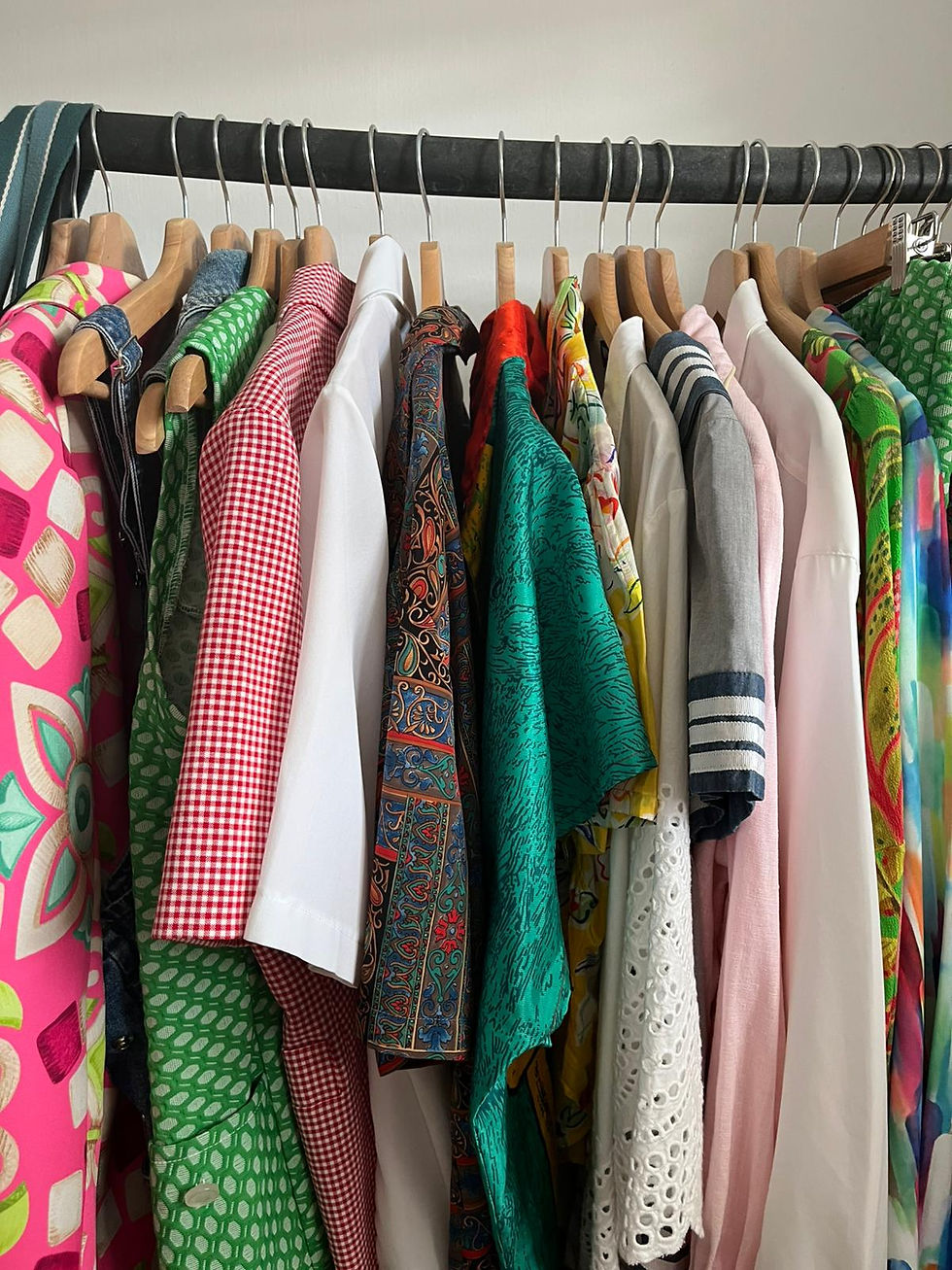The Story of H&M : From a small Swedish shop to a global fast - fashion giant
- tamaralevy8
- Nov 2
- 3 min read
The beginnings: 1947
H&M is actually an old brand as it was born in 1947 in Vasteras, Sweden and created by Erling Persson. Erling was inspired by a post World War Two trip to the US where he witnessed the rise of trendy and affordable fashion. Galvanized by his discovery, he headed back to Sweden with the goal to start a womenswear brand that would follow fashion trends and be affordable for the masses.
His store, named Hennes (Hers) , offered a high style turnover to match the ongoing trends, and later set the grounds for fast fashion. However, at the time most of the clothes were produced in Sweden, in small or medium sized workshops. Even though most workers employed were mostly women working long hours in harsh conditions, Sweden had even back then strong trade unions, and some paid holidays were just being implemented.
The expansion : 1968
In 1968, Erling Persson acquired Maurice Widforss, a Stockholm based hunting and fishing store. The store included men’s clothing, as Erling decided to expand to men’s clothing as well, and changed its name from Hers to Hennes and Maurice (H&M).
H&M was born!
Moving production to Asia : 80s
In the early 80s, H&M started shifting its production source to Asia, in countries such as Hong Kong and China. By the 1990s, Asia had become the production hub for H&M - with clothing being produced in Bangladesh, India, China, and Cambodia. Labor costs in Asian countries were much cheaper than in Europe, allowing H&M to mass produce at a fraction of the price. At this time, there was also a surge in trade liberalization with multiple trade agreements, with the rise of globalization movements. As such, it made it easier and cheaper to import from developing countries. The speed of production in Asia also favored the production of large volumes, very quickly, to fuel the H & M fast-fashion model.

From the 2000s to today:
Bangladesh became a hub for H&M production - the country poses serious questions in H & M's growing sustainability stance. H& M is sourcing from multiple factories there, due to extreme low prices, high-volume capacity and well-developed garment sectors.
However, as of 2025, the legal minimum wage for garment workers is the equivalent of 115USD per month, and even if H&M has publicly supported fair wages for its workers, it has yet to commit to paying a decent living wage to Bangladeshi garment workers, about 200 USD per month.
After facing numerous sustainability pressures, the brand eventually started taking key measures to boost its image and avoid scandals. H&M has a clear sustainability strategy and shows good progress, as such the brand aims to use only recycled or sustainably sourced materials by 2030 and become climate positive by 2040. Moreover, in 2024, H&M reported that 89% of their materials met these criteria, with 29.5% being recycled- very close to their 30% recycled target for 2025, which they are on track to meet ahead of schedule.
However, H&M faces extensive greenwashing accusations - for example their recycling program “Close the Loop” was found to send much of the collected clothing overseas, such as to Ghana where the loathing ends up in landfills.
H&M efforts towards sustainability cannot be undermined but maybe the solution is just to come with a different production model, entirely.



Comments